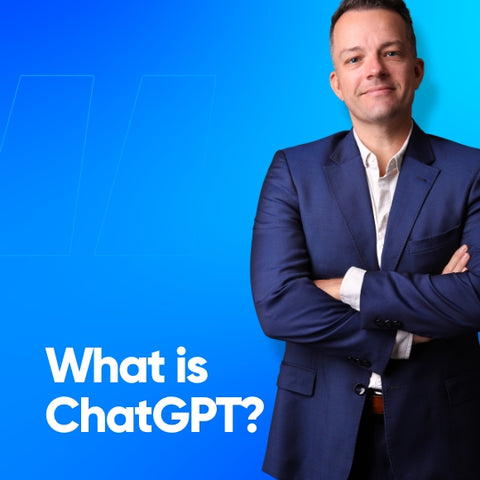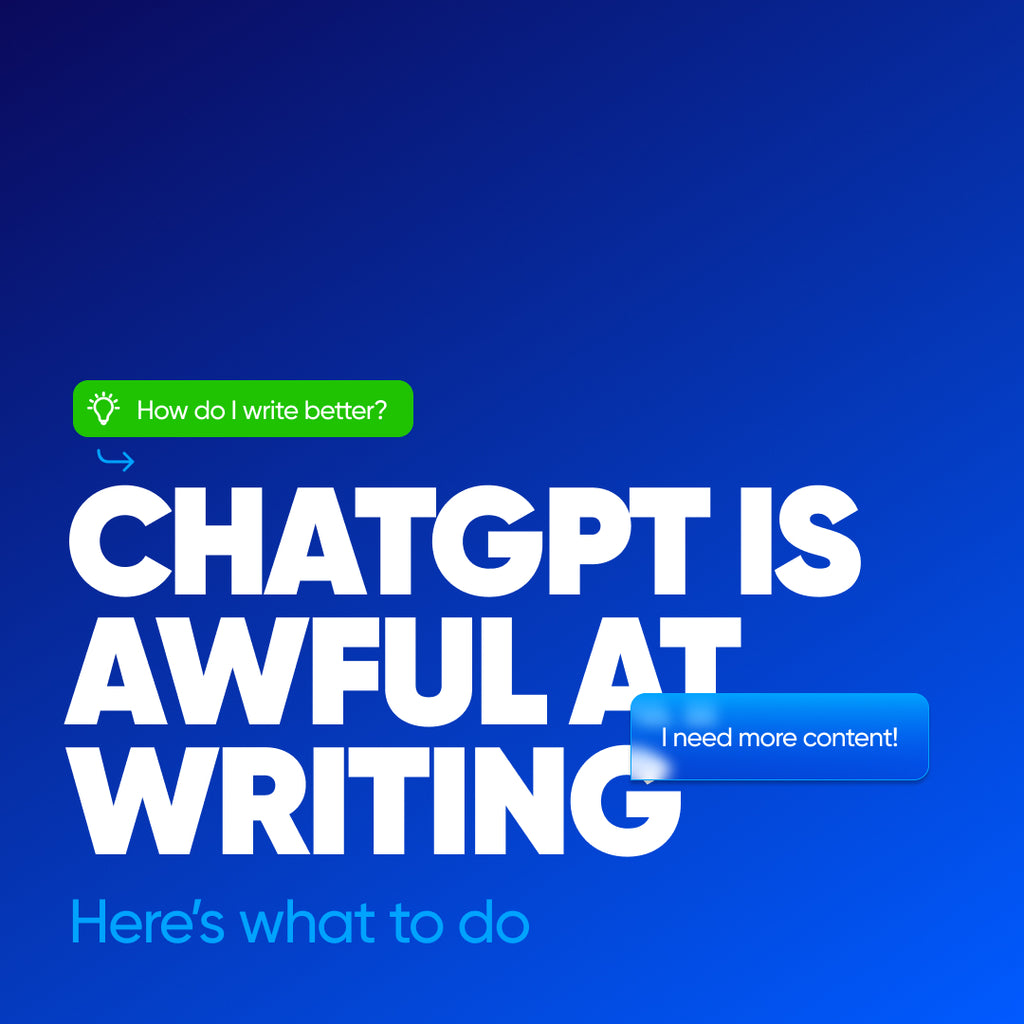Unless you've been on social media hiatus, you couldn't have missed the new internet obsession with ChatGPT, an AI chatbot.
The total Chat GPT users one million within within a few days of going live. It uses GPT-3, a language processing technology. While the real hero here is GPT-3, ChatGPT is simply the first practical use case of this language model created by OpenAI.
Since its launch, the world of research and copywriting have been turned on their heads. Tech companies around the world are racing to build complimentary and competing solutions to OpenAI's ChatGPT.
What is ChatGPT, and what can it do?
What is GPT?
GPT stands for Generative Pre-trained Transformer. It is a computer program built by OpenAI. GPT-3 is the third generation of this computer program, a neural network machine-learning model trained using internet data and human ai trainers to fill in knowledge gaps.
GPT-3 is an extensive language model with natural language processing as one of its main features, which it uses to generate human-like responses. It uses reinforcement learning, a trial-and-error method of finding the correct solution to a prompt given by the user and also remembering previous inputs. This allows it to not only find the right answer but also deliver it in a conversational way.
Where does this language model get its training data from?
GPT-3 uses free-to-use databases to build its knowledge. GPT-3 gets this data from CommonCrawl, Wikipedia, and WebText 2. You need to know that these databases collect information and compile it for free, and then ChatGPT takes this information and presents it to you based on the prompt.
GPT-3 here then is doing the task of scanning the data, selecting the relevant answers, and combining pieces of information to answer questions or execute prompts.
What can it do?
As for what GTP-3 can do, it is limited to text-based responses. The highlight is that it can conversationally answer human inputs that feel like the response you receive was written by a real human being.
You can use ChatGPT to create human-like text, including poems, verses, video scripts, songs, blog posts, taglines, slogans and so much more. It can even compute costs and debug code. In our own research, we tried asking it "how to edit the size of an image in CSS," and it responded with code snippets to be copied and used as deemed fit. So, there is a potential for a user to learn new skills with this.
This ability to generate relevant context-based answers has immediately made ChatGPT a useful tool that writers use to develop prompts for their writing. Even with all the great applications, ChatGPT is still quite limited.
Limitations of ChatGPT
ChatGPT is being called a revolutionary artificial intelligence by some, with the potential to replace a search engine. While that may be true at some point in the future, ChatGPT has its own set of limitations. Some of these are:
Accuracy
With information coming from various sources, primarily the internet, AI cannot be 100% accurate with all its answers. In some cases, it can return half-true or nonsensical answers.
This means it can't be trusted completely and would require human interference to correct the facts. For example, we tried asking ChatGPT, "What is the fastest orbiting planet" and it does return the answer as Mercury which takes 88 days to orbit around the sun. However, the same answer says that Venus has the shortest year (255 days) because of its rotation. Not only is 88 days faster than 255, but the year is also determined by a planet's revolution, not rotation.
This points to the fact that the quality of data is not optimal and can't be compared to a search engine like google.
Human responses
ChatGPT is great at responding to a prompt or a problem. So much so that it would break it down into specific steps, but it misses the general communication style humans have with other human beings. Some answers are excessively verbose, and no human would talk like that.
Your question, in some cases, only warrants a short answer, but ChatGPT will give a whole summary of the concept even though it wasn't asked. While this is good, it can pull that information. The human-like comparison is difficult because it's less of a conversation and more of a description.
It seems more like ChatGPT is talking at you than to you, a well-researched speech rather than an intelligent conversation.
Machine learning bias
Machine learning bias, sometimes called algorithm bias, is when an algorithm produces results based on erroneous assumptions in the machine learning process. Although it can be fixed with human feedback, ChatGPT is not constantly learning. The current database is limited to the data on the internet till the year 2021, and it will only respond using that dataset to provide information on your prompts.
This is what makes it a little eerie as well. Since the AI is trained by a wide database of documents and human input and not the moral code, it has results that are sometimes racist in nature. Based on feedback from its users, however, OpenAI has been quick in fixing these issues, but there is still some time before the technology is perfected.
Is ChatGPT free?
Yes and no. While the regular version of ChatGPT is free, for $49 a month you can upgrade to a Pro version. The Pro version has a better interface, responds faster and can handle more complex queries compared to the free version.
ChatGPT Pro is a solution that is made with enterprises in mind. Unlike ChatGPT (Regular), you get priority access to the service even when servers are busy. It can intergate with other platforms that you may use for your business to provide real-time technical information, customer service and product recommendations. Since complex prompts "cost" higher to generate, this premium is warranted.
Only time will tell what the major differences between the two are, but the improvements are coming. Since the launch of GPT3 in 2020 and the subsequent GPT 3.5, we have seen this tool take the world by storm.
What does this mean for freelance copywriters?
With AI language tools that can write and respond like a person on a wide range of topics, the next logical assertion is that ChatGPT and tools like it can potentially replace copywriters; however, that is not true.
ChatGPT is simply a tool, and even though it's quite powerful, it cannot think. Which means it can't come up with a fresh idea. Even with all the world knowledge, it would still require users to ask smart questions within that search bar.
It is, without a doubt, revolutionary and can make the initial brainstorming stages of a content piece more efficient because you can quickly explore and learn about general themes.
For copywriters wondering if they should use ChatGPT in their workflow, they should do so by all means. But they must be aware that even though it's smart, it's still artificial intelligence and can't think and write in a context that you wish to, and even the results can have an error within them.
So whether it's large blog posts or small copy for ads, the software is only as good as the user's input and would require consistent oversight and editing.
So, is it worth it?
ChatGPT is one of the new software tools that has made waves both in and beyond the tech industry. It has its limitations but the sheer ability of the software, can't be overlooked. ChatGPT is a fantastic tool for people from all walks of life and it can be used to supercharge the thinking process for many creative endeavors.
We know that GPT-3 is a large language model, and like all AI language models, the response it generates will also be more accurate, humanistic, and free of bias. Ultimately making ChatGPT better as well. Until the arrival of GPT4 (the improved version), just double-check if you use any of the results that you may want to use professionally.

What is ChatGPT
Then, pick one of these:
Third, try these:

Get freelance work!

Build your website!





